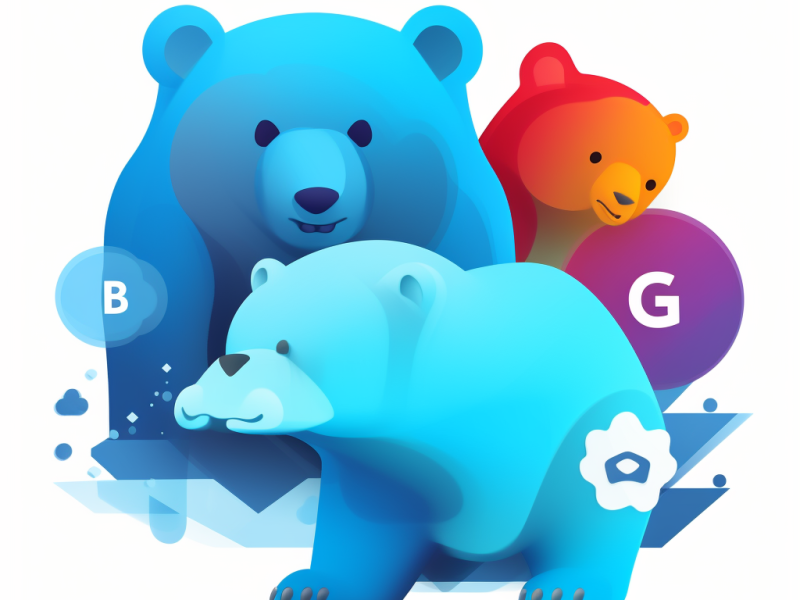Introduction to Golang
Golang, also known as Go, is a modern programming language developed by Google. It was designed to be simple, efficient, and easy to learn, making it an excellent choice for both beginners and experienced programmers. Golang combines the best features of other programming languages while adding its own unique touch, resulting in a language that is fast, reliable, and fun to use.
Golang Syntax and Data Types
One of the first things you’ll notice about Golang is its clean and concise syntax. The language uses a simplified syntax that is easy to read and write, making it accessible to programmers of all skill levels. Golang also supports a variety of data types, including integers, floats, strings, and booleans, as well as more complex types like arrays, slices, and maps.
Functions and Methods in Golang
Functions and methods are essential building blocks in Golang. Functions are standalone blocks of code that perform a specific task, while methods are functions that are associated with a particular type. Golang supports both named and anonymous functions, as well as variadic functions that can accept a variable number of arguments.
Concurrency in Golang with Goroutines and Channels
One of the most powerful features of Golang is its built-in support for concurrency. Golang uses goroutines, which are lightweight threads that can run simultaneously, to enable concurrent programming. Goroutines communicate with each other using channels, which are typed conduits that allow goroutines to send and receive values.
Golang Packages and Modules
Golang has a robust package ecosystem that allows developers to easily share and reuse code. Packages are collections of related functions and types that can be imported into other programs. Golang also supports modules, which are a way of managing dependencies and versioning for packages.
Conclusion
Golang is a powerful and expressive programming language that is well-suited for a wide range of applications. Its simple and concise syntax, combined with its strong typing and built-in support for concurrency, make it an excellent choice for developers who want to write efficient, reliable, and maintainable code. One of the key strengths of Golang is its simplicity. The language has a small and easy-to-learn syntax that is based on a few key concepts, such as functions, data types, and control structures. This simplicity makes it easy for developers to get started with Golang and to write code that is easy to read and understand.
At the same time, Golang is also a very powerful language that provides a lot of flexibility and expressiveness. Its support for composite types like arrays, slices, maps, and structs allows developers to create complex data structures and algorithms, while its support for functions and methods allows for a high degree of code reuse and modularity. Another key strength of Golang is its performance. Golang is a compiled language, which means that it is translated into machine code before it is executed. This allows Golang programs to run very efficiently, with minimal overhead and excellent performance characteristics.
Golang also has excellent support for concurrency, which is becoming increasingly important in today’s world of multi-core processors and distributed systems. Golang’s goroutines and channels provide a simple and effective way to write concurrent programs that can take advantage of multiple cores and distribute work across multiple machines. Despite its many strengths, Golang is not without its challenges. One potential drawback of Golang is that it is a relatively new language, which means that it may not have the same level of tooling and library support as more established languages like Java or Python.
Additionally, Golang’s simplicity and minimalism can sometimes be a double-edged sword. While it makes the language easy to learn and use, it can also make it more difficult to express complex ideas or to create highly abstracted code.
Overall, however, Golang is a language that is definitely worth considering for a wide range of applications. Its simplicity, performance, and support for concurrency make it an excellent choice for developers who want to create high-quality, reliable, and efficient software. If you’re interested in learning more about Golang, there are many excellent resources available online, including the official Golang website, which provides a wealth of documentation, tutorials, and examples. There are also many books, courses, and online communities dedicated to Golang, which can provide valuable insights and support as you learn and grow as a Golang developer.
In conclusion, Golang is a language that has a lot to offer, and its popularity is only likely to grow in the coming years. Whether you’re a seasoned developer looking for a new challenge or a beginner just starting out, Golang is definitely worth exploring. With its simple syntax, powerful features, and excellent performance, Golang is a language that can help you create software that is fast, reliable, and easy to maintain. Ready to take your software development to the next level with Golang? Contact us today to learn how our expert Golang developers can help you create fast, reliable, and scalable applications that meet your business needs.

